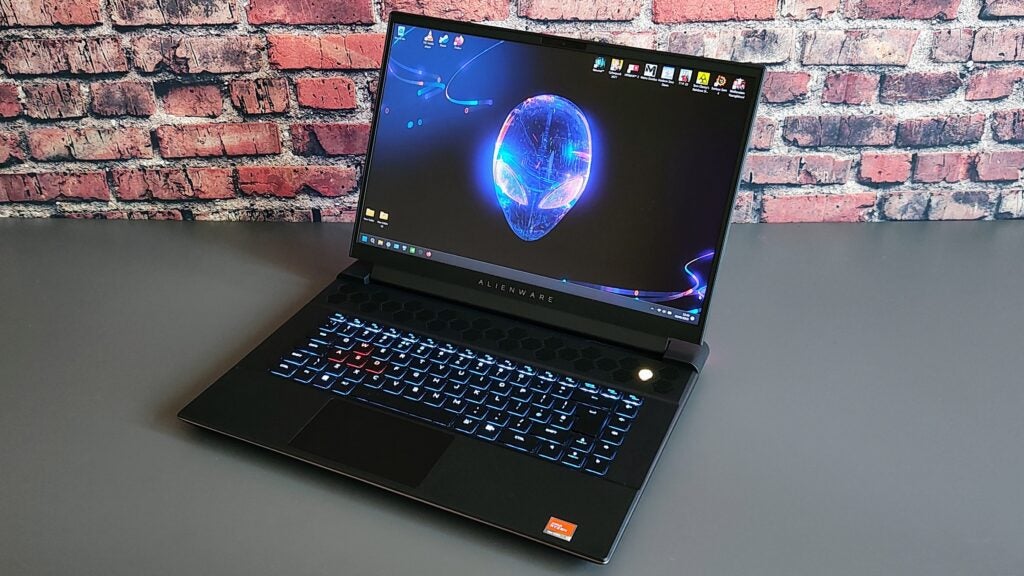The Razer and Alienware line of gaming laptops are prolific in their own right, packed with high-end internals and more features than ever. But, with two juggernaut 16-inch gaming laptops to choose from, you may want to consider some of their key differences.
Both the Alienware M16 and Razer Blade 16 managed to score 4 stars or above in our dedicated reviews thanks to their fantastic gaming performance and sleek design. With two alluring options on the market, you may want to look at some of the critical differences – and similarities – between these two laptops so you can decide which setup is best for you; here is everything you need to know.
AMD vs Intel
The Razer Blade 16 comes kitted out with up to a 13th-Gen Intel Core i9-13950HX processor, with a maximum boost clock speed of 5.5GHz. Our unit managed to score very favourably during our Geekbench tests, even if it wasn’t quite on par with some of the very best gaming laptops out there right now.
Dell decided to pack the Alienware M16 with AMD’s latest Dragon Range CPUs, with the option to pick between the Ryzen 7 7745HX or the Ryzen 9 7845HX. Our review unit came with the latter and blasted through our benchmarks, overtaking the Razer Blade 16 in both the single and multi-core Geekbench tests.
Both laptops come with the latest Nvidia RTX 4000 Series graphics cards – with the Razer Blade 16 even offering the RTX 4090 – making them more than capable of running your favourite triple-A games at a high frame rate.

Razer Blade 16 is a lot more portable
Gaming laptops are not known for being the most portable laptops on the market. The need for larger batteries, more powerful graphics cards and in a lot of cases, built-in cooling, add up to make a bulkier device than some people may be used to.
With that in mind, the Razer Blade 16 is the most portable option out of the two, weighing in at 2.45kg. This is a lot heftier than a traditional productivity laptop – which typically sits between one and two kilograms – and a lot chunkier than the Razer Blade 15 Base Edition, which weighs just 2.09kg.
The Alienware M16, meanwhile, comes in at a massive 3.25kg. This won’t necessarily be a problem if you never intend for your laptop to leave your desk, but it’s worth taking into account if you’re planning to game on the go.
Alienware comes with a higher refresh rate, but Razer has a better resolution
The Razer Blade 16 can be found with two different screen variations; Quad HD+ (2560×1600) with a 240Hz refresh rate and Ultimate HD (3840×2400) with a Mini LED Dual Mode. The latter allows you to switch between UHD+ with 120Hz and FHD+ and 240Hz modes. Our time with the Mini LED panel was joyous; the contrast was expectedly excellent and colours popped off the screen, elevating both game and video content to new levels.
The Alienware M16 also comes with multiple display options, including a QHD+ 165Hz, QHD+ 240Hz and an FHD+ (1920×1200) with a whopping 480Hz refresh rate.
We tested the 240Hz 2.5K variation and found it to be a solid performer, with 99.5%, 90.2% and 96.6% of the sRGB, Adobe RGB and DCI-P3 gamut covered, respectively. If you’re looking for the best refresh rate on offer then the 480Hz configuration will be the best choice, but the 240Hz option comes with a higher resolution for even crisper gameplay.
Both the Alienware M16 and Razer Blade 16 come with fantastic displays with enough variation for users to pick and choose what works best for them. If you’re after a high resolution, Razer will be the better option, but Alienware has it covered in terms of refresh rate.
More memory on the Alienware M16
The Razer Blade 16 comes in two configurations when it comes to RAM: 16GB or 32GB DDR5. Dell kicked this up a notch with the Alienware 16, which can be kitted out with up to 64GB DDR5 memory.
While 64GB of RAM may not be needed for a traditional laptop, on a gaming device, it will help alleviate lag and stuttering, allowing for a smoother gaming experience overall. The inclusion of DDR5 RAM is another added benefit for both Razer and Alienware as it brings a higher level of bandwidth that’s ideal for gamers. If you’re interested in upgrading your RAM on your laptop, make sure to check out our dedicated how-to.

The Razer Blade 16 can be a lot more expensive
With all that said, you may be questioning which laptop is more affordable. Unsurprisingly, Razer kitted out this premium laptop with a premium price tag, with the high-end model costing $4299.99/£4399.99. It’s worth noting that the lower configuration starts at just $2699.99/£2699.99
The base variation of the Alienware M16, on the other hand, costs just $1799.99/£1599, making it the more affordable option if you’re happy to skip out on high-end features like a 480Hz refresh rate. If you do want all the bells and whistles included – such as 2x 8TB storage – the price will skyrocket to $4699.99/£4049, giving users some wiggle room in terms of spending.
Overall, both these laptops can be configured down to more digestible prices but you will likely be spending more if you opt for the Razer Blade 16, although that will also depend on your region.











